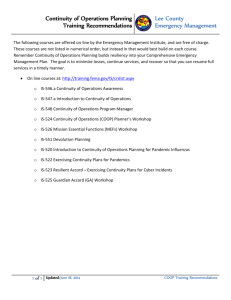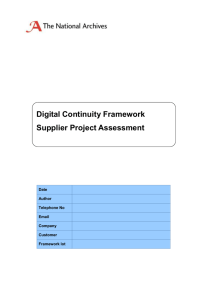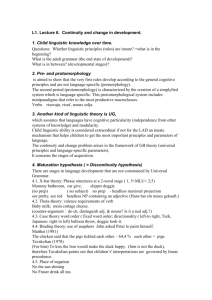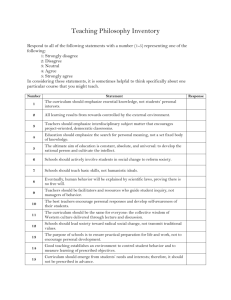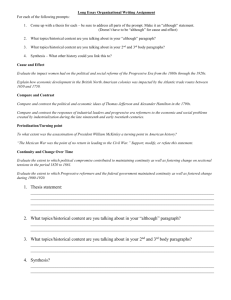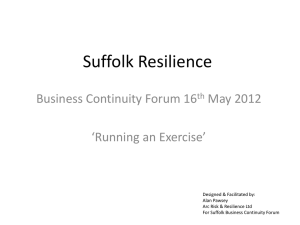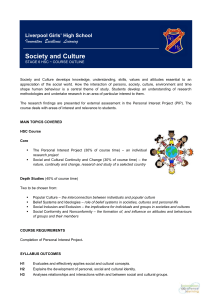Notes – discussion institutional ownership
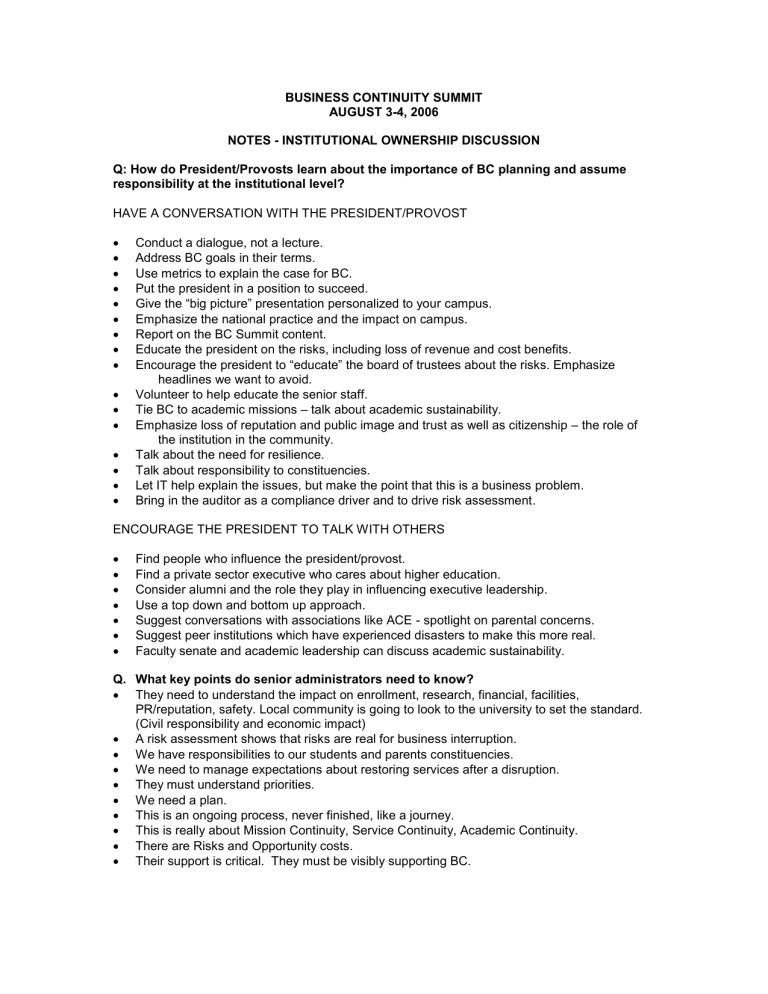
BUSINESS CONTINUITY SUMMIT
AUGUST 3-4, 2006
NOTES - INSTITUTIONAL OWNERSHIP DISCUSSION
Q: How do President/Provosts learn about the importance of BC planning and assume responsibility at the institutional level?
HAVE A CONVERSATION WITH THE PRESIDENT/PROVOST
Conduct a dialogue, not a lecture.
Address BC goals in their terms.
Use metrics to explain the case for BC.
Put the president in a position to succeed.
Give the “big picture” presentation personalized to your campus.
Emphasize the national practice and the impact on campus.
Report on the BC Summit content.
Educate the president on the risks, including loss of revenue and cost benefits.
Encourage the president to “educate” the board of trustees about the risks. Emphasize headlines we want to avoid.
Volunteer to help educate the senior staff.
Tie BC to academic missions – talk about academic sustainability.
Emphasize loss of reputation and public image and trust as well as citizenship – the role of the institution in the community.
Talk about the need for resilience.
Talk about responsibility to constituencies.
Let IT help explain the issues, but make the point that this is a business problem.
Bring in the auditor as a compliance driver and to drive risk assessment.
ENCOURAGE THE PRESIDENT TO TALK WITH OTHERS
Find people who influence the president/provost.
Find a private sector executive who cares about higher education.
Consider alumni and the role they play in influencing executive leadership.
Use a top down and bottom up approach.
Suggest conversations with associations like ACE - spotlight on parental concerns.
Suggest peer institutions which have experienced disasters to make this more real.
Faculty senate and academic leadership can discuss academic sustainability.
Q. What key points do senior administrators need to know?
They need to understand the impact on enrollment, research, financial, facilities,
PR/reputation, safety. Local community is going to look to the university to set the standard.
(Civil responsibility and economic impact)
A risk assessment shows that risks are real for business interruption.
We have responsibilities to our students and parents constituencies.
We need to manage expectations about restoring services after a disruption.
They must understand priorities.
We need a plan.
This is an ongoing process, never finished, like a journey.
This is really about Mission Continuity, Service Continuity, Academic Continuity.
There are Risks and Opportunity costs.
Their support is critical. They must be visibly supporting BC.
Q . How do we get departments involved in planning?
Senior Executives must show visible/support, establish expectations/accountability.
Auditors can conduct assessments of departments.
Have a formal process to identity risks.
Dust off Y2K plans.
IT can be a catalyst.
They can be shown interdependencies with emergency plans.
Events at other institutions can get the attention of the community.
A retreat with experts can orient people.
Note legislation – state or federal requirements.
Make it easy for departments to opt in with templates, checklist, IT help.
Allow them to accept accountability that this is their data, then develop SLAs.
Develop simple targeted community messages.
Administrative Concerns
Top Down Driven
Get university executive leadership involved.
BC orientation, communication, education
Policy-driven
Audit requirement
Require unit testing – drives “ownership”
Leverage IT services for the institution
Academic Concerns not top-down driven focus on impacts for: careers research classes (education) clinical practices
Develop champions among faculty
BC orientation, communication, education (e.g., NIH)
Policy-driven
Persistence
Leverage IT services for the institution
Resistance comes because: people don’t understand it, they don’t like it or they don’t like you!
These are three different things so need to understand all of these



